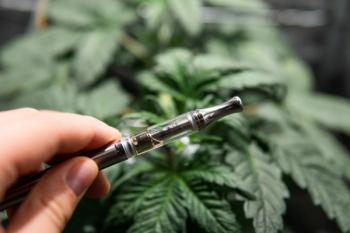
Cannabis Science and Technology
- June 2023
- Volume 6
- Issue 5
- Pages: 12-14
Cannabis Sourcing and Extraction Outcomes

For cannabis processors that do not cultivate, sourcing biomass is critical to determining the cost and quality of the cannabis extracts that are produced. Here, we review the variables in sourcing cannabis biomass and the impact they have on extraction outcomes.
A cannabis extraction facility is often less expensive and more versatile than a cannabis cultivation facility. These are some of the reasons there are more cannabis processors and extractors than cultivation facilities in states that are not vertically integrated. Mature cannabis markets have consistent, if not an excess, supply of cannabis biomass. Prices for biomass have extreme swings depending on the season or supply and demand of cannabis biomass. For cannabis processors that do not cultivate, sourcing biomass is critical to determining the cost and quality of the cannabis extracts that are produced. Here, we review the variables in sourcing cannabis biomass and the impact they have on extraction outcomes.
Commercial cannabis can be grown in many different environments. Cultivators choose between outdoor, indoor, and greenhouse depending on the facility’s location, budget, and production goals. Cultivation of cannabis involves various factors, such as genetics, cultivation methods, and processing techniques, that affect the quality of the final product. The cultivation method and scale of the facility can significantly impact the cost, range of quality, and supply of biomass. These variables dramatically impact processors who source extraction material from their own cultivation facility or other cultivators.
Indoor cultivation is the practice of growing cannabis in an indoor facility with a controlled environment. The indoor facility is equipped with artificial lighting, temperature and humidity control, and ventilation systems. The controlled environment of indoor cultivation allows cultivators to manipulate various growth factors, such as lighting, temperature, and humidity, to optimize plant growth and increase yields. Greenhouse cultivation is a hybrid of outdoor and indoor cultivation; however, the cultivation methods and end product are more similar to indoor cultivation.
On the other hand, outdoor cultivation involves growing cannabis in an open environment, such as in a field or a greenhouse, without the use of artificial lighting or environmental control systems. The natural environment of outdoor cultivation can provide various benefits to the plant, such as exposure to natural sunlight and fresh air, which can enhance the terpene and cannabinoid profiles.
The aforementioned differences in cultivation methods significantly impact the outcomes of the extracted end products.
Terpene and Cannabinoid Profiles
The terpene and cannabinoid profiles of cannabis can be significantly affected by the cultivation method used. Cannabinoids, like tetrahydrocannabinolic acid (THCA) and cannabidiolic acid (CBDA), are naturally produced by the cannabis plant. However, there are cannabinoids found in cannabis that are oxidation or degradation products, such as cannabinol (CBN) and cannabitriol (CBT) isomers. Outdoor cultivation methods can produce cannabis with a more diverse and complex terpene profile due to exposure to sunlight, Earth’s elements, and the genetics of plants successfully grown outdoors (1). Cannabis with a more diverse and complex terpene profile can result in a more flavorful and aromatic final product. Outdoor cannabis often has a lower concentration of cannabinoids and a higher concentration of terpenes than indoor cannabis (Figures 1 and 2). For processors seeking diverse chemical profiles, which will produce diverse effects of cannabis, outdoor cannabis may be the best source. Exposure to the outdoors also increases the amount of wax the plant produces to protect itself, which ends up in the raw extract. This wax is a byproduct that can add time to the refinement process and can interfere with the quality of the extract. This is something to consider when evaluating source material and processing time.
Indoor cultivation methods can produce cannabis with a more consistent and predictable terpene profile due to the controlled environment. Because of this, the cannabis flower and final extract often have a lighter color than outdoor cannabis. Interestingly, the cannabinoid profiles of indoor cannabis have higher concentrations of THCA and extrinsic cannabinoids (please see graphics in reference 1). Higher concentrations of THCA produce a more potent THC product as opposed to the balanced and diverse chemical profile of outdoor cannabis. All these factors have a significant impact on the end product quality and chemical profile.
Pesticide and Fertilizer Use
The use of pesticides and fertilizers can also impact the quality of the final product. Indoor cultivators may use more pesticides and fertilizers to combat pests and optimize plant growth. Outdoor cultivators, on the other hand, may use fewer pesticides and fertilizers due to the natural environment and natural defense mechanisms of the plant.
Yield and Cost
The yield and cost of cannabis may be the most important metrics to monitor when sourcing cannabis for extraction. They are both significantly affected by the cultivation method and grade of the biomass. Table I is an example of how the final cost of the extract can be estimated by using biomass cost and THC concentration.
- Indoor cultivation methods can consistently produce a harvest multiple times a year and the product will have higher concentrations of cannabinoids. This means processors sourcing from indoor cultivators will have access to consistent biomass year-round and extraction yields of cannabinoids will be higher. However, the cost of production is significantly higher due to buildout cost, operating cost, and heavy utility use for lighting and environmental control systems. The high cost of indoor biomass may be worth it depending on the extraction yield and quality.
- Outdoor cultivation methods produce one harvest per year and the product will have lower concentrations of cannabinoids. Depending on the scale of the outdoor cultivation site, one outdoor harvest can outweigh the annual production of the annual harvest weight of indoor cannabis facilities. However, it depends on the scale of the outdoor cultivator. Starting with material that has a lower concentration of cannabinoids produces lower yields, but the cost of production is lower due to the use of natural resources.
- The differences between indoor versus outdoor cannabis has been evaluated here, but the grade of the material will also impact the quality and cost of the final extract. Cannabis flower is the highest grade of material, however, there is high- and low-quality cannabis flower. Indoor and outdoor flower will also have different cannabinoid and terpene content. Cannabis trim is a byproduct and is often lower in cannabinoid and terpene content. It is also usually exposed to lower quality care and handling, which can impact the quality of the end extract. All these variables can be evaluated by analyzing the cannabinoid content and terpene content as well as visually inspecting the biomass prior to purchase.
Conclusion
Ultimately, all these factors can be used to make the best choice when sourcing cannabis for extraction. Supply and demand will fluctuate throughout the year and should be anticipated when budgeting for purchasing throughout the year. To make the best decision for extraction sourcing, consider yield, cost, quality, and what end product the extract will produce.
Reference
- Zandkarimi, F., Decatur, J., Casali, J., Gordon, T., Skibola, C., Nuckolls, C., Comparison of the Cannabinoid and Terpene Profiles in Commercial Cannabis from Natural and Artificial Cultivation, Molecules. 2023; 28(2):833. doi: 10.3390/molecules28020833.
About the Columnist
Lo Friesen is the founder, CEO, and Chief Extractor of Heylo. With a background in chemistry and clinical research, Lo was inspired to explore cannabis as a medicine and to enter the emerging industry. She joined Eden Labs, a leading CO2 extraction equipment manufacturer to support and expand a Research and Development department. There she managed the development of their latest and greatest CO2 extraction system. In 2017, after working with Eden Labs and another cannabis processor, Lo launched Heylo with a mission to help people get more out of life with cannabis.
How to Cite this Article:
Friesen, L., Cannabis Sourcing and Extraction Outcomes, Cannabis Science and Technology, 2023, 6(5), 12-14.
Articles in this issue
Newsletter
Unlock the latest breakthroughs in cannabis science—subscribe now to get expert insights, research, and industry updates delivered to your inbox.


